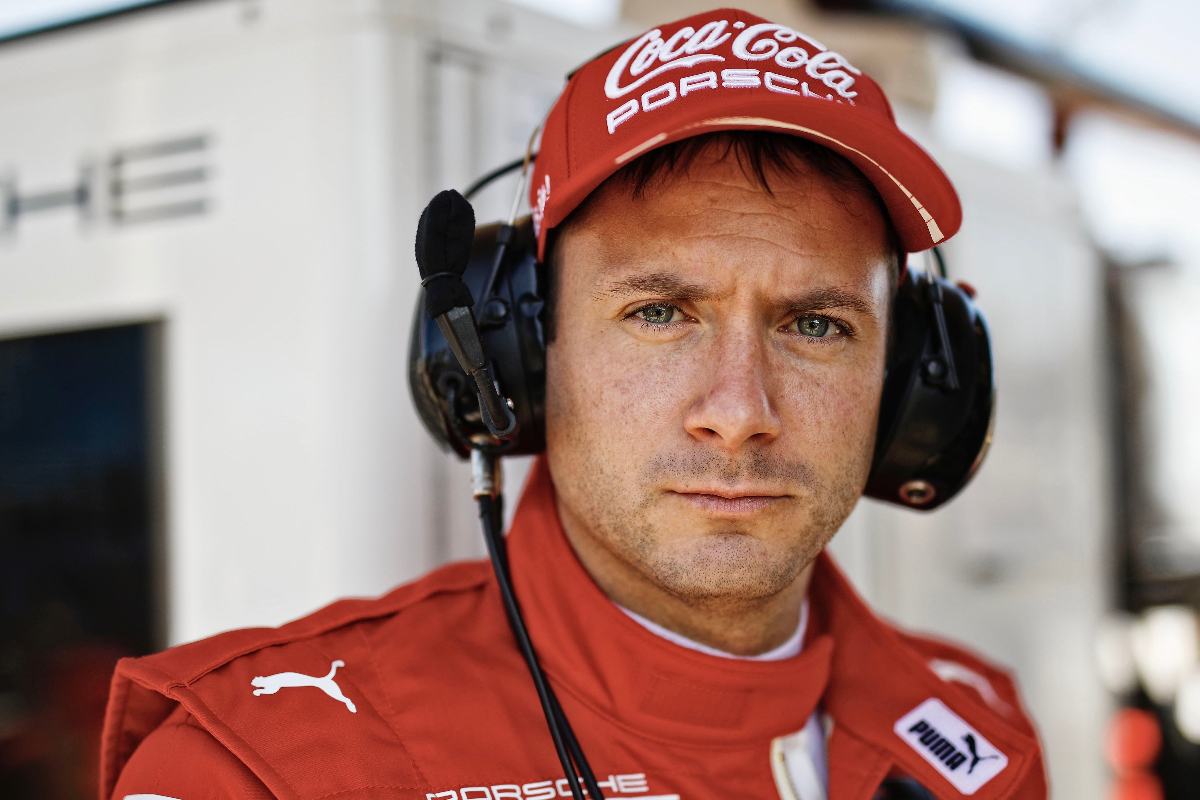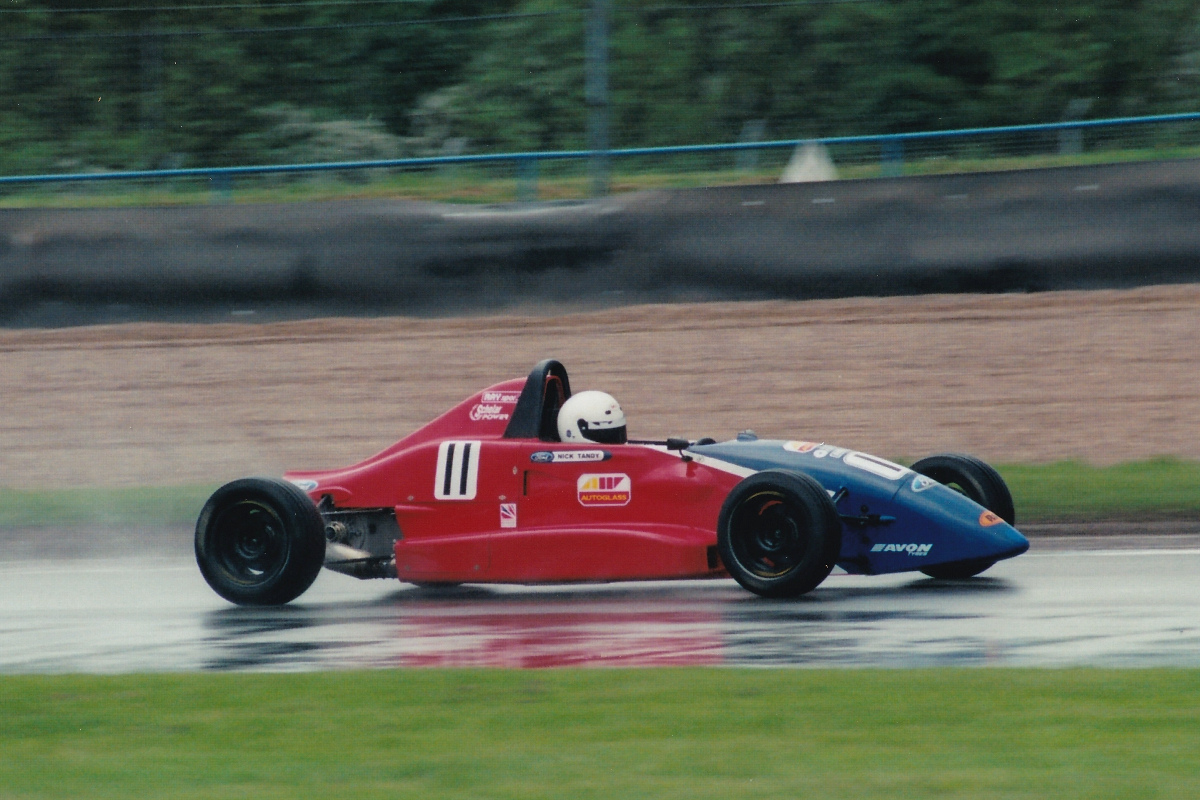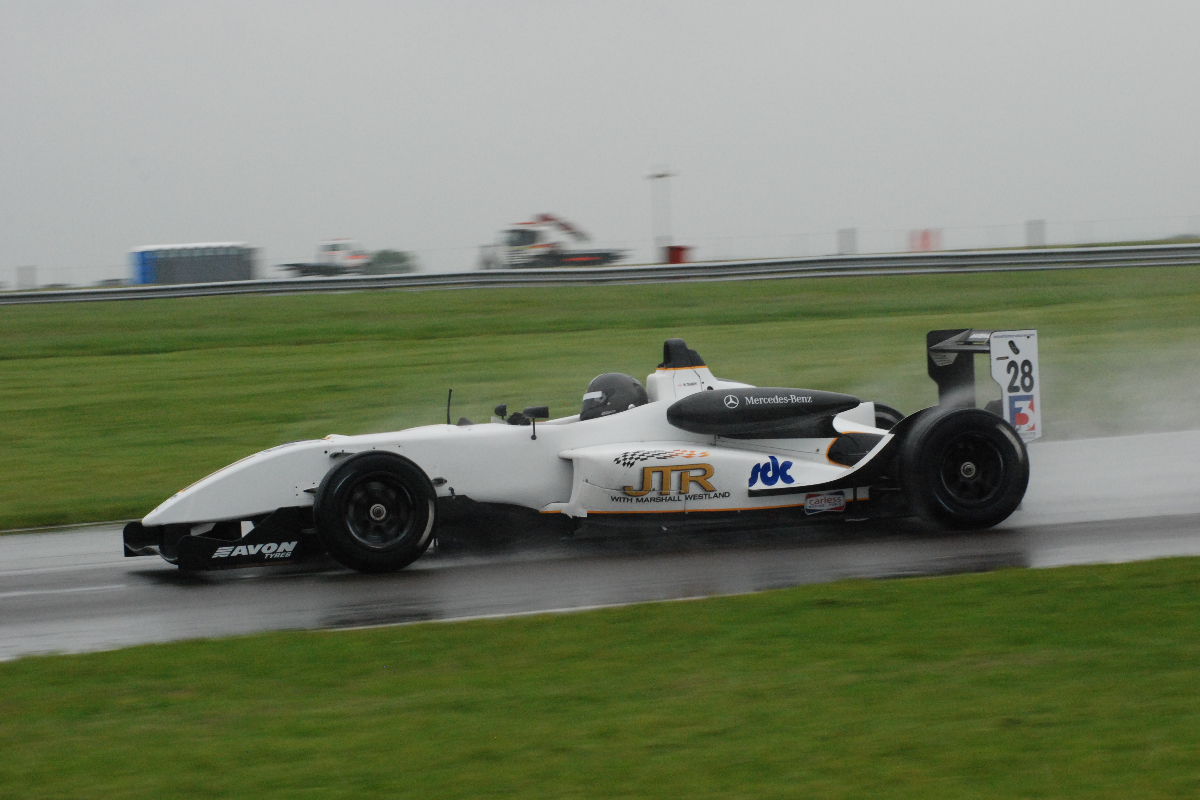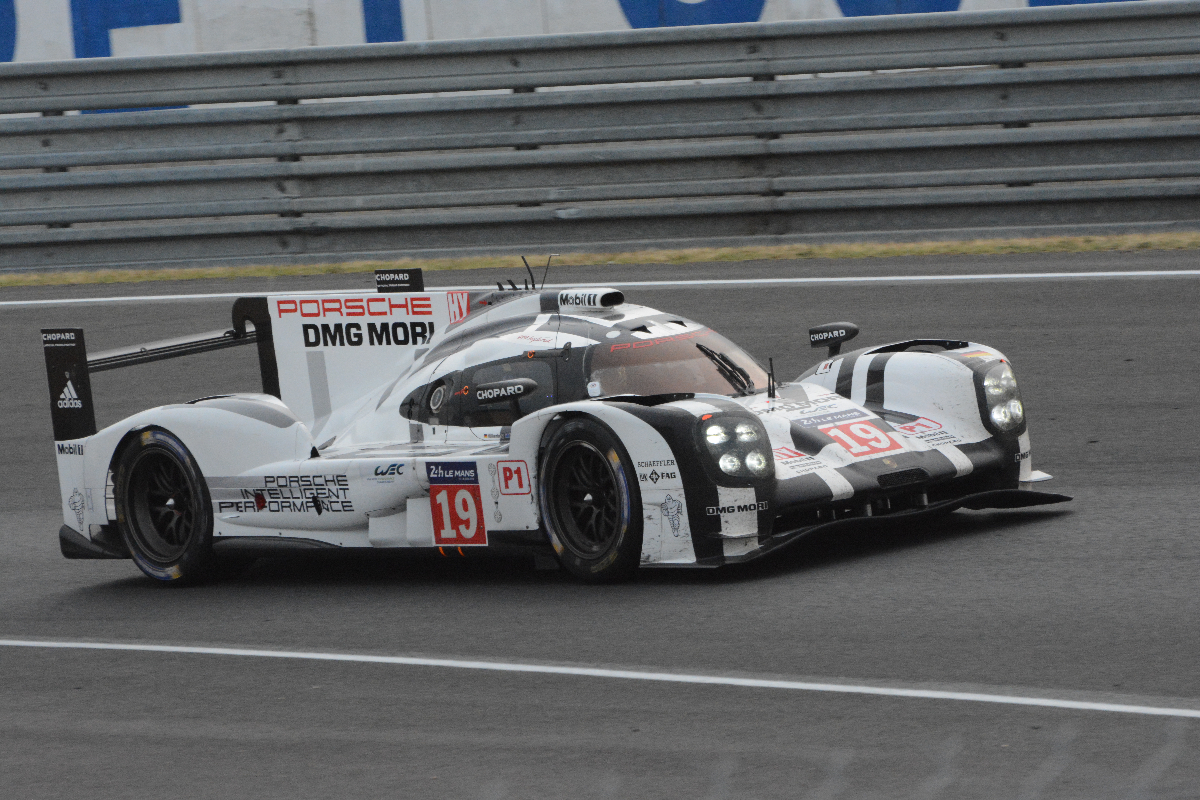
Photos: Porsche AG
With outright or class wins in the major enduros both sides of the Atlantic, Nick Tandy is arguably Britain’s best, and certainly most versatile, modern endurance racer. But single-seaters are key to his story of success
His return to the factory Porsche squad after a two-year absence will see him again challenging for overall victories with the marque’s Penske-run 963 LMDh prototype. Yet he remains largely unknown to the Formula 1-obsessed motorsport fanbase in general, let alone a wider sporting audience. Tandy’s ascent to works drives with Porsche and General Motors was far from straightforward, as he had to overcome numerous setbacks: financial, sporting and personal.
Formula Scout sat down with Tandy at this year’s Spa 24 Hours race, where he put in a typically thrilling drive from the back of the 65-car grid in the Porsche 911 GT3 R of crack Porsche squad KCMG, to explore his single-seater roots and how that helped his transition to endurance racing.
Looking back 17 years to his first steps on the motorsport ladder, he explains that his entry into single-seaters was “kind of a bit by accident, really”. He started out racing Minis, first in stock cars on dirt ovals and then on asphalt race tracks.
“I got banned from the club that I was racing at. Both me and my brother [Joe] did, for really menial things, really looking back,” he confesses.
“We were kind of getting fed up with that club and the kind of the racing, the cars in general,” when he saw “an advert for a scholarship for the old BRDC single-seater series, which had been going a few years.”
“It was, I think, about £2,500 to enter this two or three-day competition but the winner got a season’s worth of racing out of it and I had no plans for the coming season, so I spent effectively three months’ wages or a season’s worth of Mini racing on entering this scholarship. It was quite a big risk at the time but I won. And that was how I got into single-seater driving.”
Single-seaters had “always fascinated”, Tandy remembers.

Photo: Roger Gascoigne
“I always wondered what it would be like to race a car where I could see what the front wheels were doing and when they were locking and this sort of thing, and what extra senses that would give you over driving a normal car. When you’re in a saloon car, you often see the smoke before you realise that the wheel has locked, because it’s difficult to feel.”
Older brother Joe, a fellow Mini tearaway, “attempted to do the Formula Palmer Audi series because he was working as one of the top mechanics at Palmer Sport at the time and often shook the cars down on track”.
Remarkably, both Tandy brothers won their respective championships on their go at open-wheel racing. Joe Tandy was FPA champion in 2005, while Nick won the BRDC Single-Seater Championship.
The older Tandy even earned a nomination for the then-McLaren-sponsored Autosport BRDC Award at the end of the year.
“The year after, he didn’t get a drive for various different reasons, one of which was the normal monetary situation but there were other things as well,” Tandy recalls. “My championship came with £30,000 prize money, which enabled me to do sort of half a season in British Formula Ford which is why I could carry on racing.
“But by halfway through the season, we weren’t happy with how the results were going and some things were suboptimal. And effectively, it was at that time that we as a group, me, my brother and also my dad, thought we could do a better job than basically most of the teams on the grid.
“So, me and my dad both took out a loan of about £10,000 each and we bought our own FFord to race in a pukka UK championship at a good level.”
At this point, Joe decided to give up on his own racing ambitions, “left his very good job at Palmer Sport, and set up Joe Tandy Racing”. Although Nicky believes that Joe had “realised that I was probably the better driver of the two of us anyway”.

Photo: Roger Gascoigne
Armed with a new Ray chassis run by JTR, Tandy and his brother’s team won first time out in British FFord at Thruxton.
“I think we won five of the last six races of the year with our own car,” remembers Tandy, slightly inaccurately – in fact, he scored two wins and two seconds in the last four races.
At first, the team travelled to races pulling the car “behind the back of my dad’s Ford Transit”. Then “over that winter Joe found some investment, bought a truck, bought a second car and it became a bonafide proper team the year after”.
“So we went again racing in British FFord in 2007 with Freddie Hunt [brother of 1976 F1 World Champion, James Hunt] as my team-mate to begin with.”
Tandy finished second in the championship in 2006, following it up with third the year after. But he did win the prestigious FFord Festival at Brands Hatch ‘twice’. “Once on the road and once in the steward’s room,” he jokes.
“The year [2006] that I won on the road, at the time I thought it was a gross misjustice. But looking back now, it was my own fault,” he acknowledges.
“I got spun around with another car just as a safety car was coming out on track. And, basically, two or three cars overtook me whilst I was coming back to rejoin the track. So, I went past them in the queue and rejoined my position where I was before the safety car came out.
“I made a decision based on the level of risk versus reward that I thought, based on how many laps and how much time of the race was left,” he explains. “I actually had a lot longer than I thought I did, so going back I wouldn’t have done what I did. I probably still had the pace to come through to the front to win.”

Photo: Roger Gascoigne
Then in 2007, Tandy started the final from pole and enjoyed a race-long tussle with that year’s British champion Callum MacLeod. In a safety car-dominated race, the pair touched as they jostled for position at one of the restarts, allowing MacLeod to break free before another incident brought the race to a premature finish.
“I finished second on the road, but again the leader made a stupid mistake and that time he got penalised and I won,” he says. MacLeod had been adjudged to have failed to maintain the gap to the safety car, earning him a two-second penalty and handing victory to Tandy.
For 2008, JTR took the decision to move up to British Formula 3 with Mygale cars [an example pictured above] rather than the ubiquitous Dallara chassis. Cost was a factor – “it was the only way we could do it effectively” – with the additional benefit of being able to enjoy a closer relationship with the French constructor.
“At the same point, we switched from running Ray cars to running Mygales in FFord, and so we were working as a semi-factory team for Mygale,” Tandy says. “We had a lot of support from a parts point of view that we could never have funded if we [had] bought an off-the-shelf Dallara. So, it was the help of Mygale that really enabled us to go into F3.
“Joe found some more investment to enable us to go and do it and it was great. It was good for me as well because you didn’t just have an off-the-shelf F3 car. We were working hand-in-hand developing this racing car. We could do whatever we liked, if we had an idea in the workshop, we could then talk to the factory in France and they could potentially come up with a solution for our idea.
“We developed that car over a year-and-a-half to be a title-contending, race-winning British F3 chassis. That is something that I am immensely proud of. And that led into our championship charge in 2009.”
Memories of Tandy’s sophomore season in F3 are, naturally, overshadowed by the loss of brother Joe in a tragic road accident in May 2009. Just over two weeks later, Tandy took a highly emotional win at Rockingham, the first for both driver and team.

Photo: Roger Gascoigne
“We couldn’t finish the season that year but off the back of my performances, I got the offer to go to have a fully paid drive in the F3 Euro Series with Volkswagen, which then led on to meeting the people within the Porsche Carrera Cup. That led to my Carrera Cup drive the year after, which is when the rest of my life began.”
But the move into the F3 Euro Series with Colin Kolles’ eponymous team proved to be a disaster.
“The Euro Series thing was terrible. The car was a bag of shit,” Tandy laughs. “But it enabled me to put myself in front of other people that were influential, so it was definitely worth doing. It was either that or stop racing.”
There are, he says, “no regrets” about giving up on his single-seater ambitions to pursue a career in sportscars.
“Yes, if things had gone differently I think I would have gone further in my single-seater career. But you don’t know when eventually the money is going to dry up or what programme you’re going to get put on. But I’m so glad, because of what’s happened to me since, that I didn’t.
“The BRDC Single-Seater stuff was good because you have the same car as everybody else, from the same pool of cars, ran out of Silverstone, so it enabled me to go out there and show what I could do as a driver and win this money that carried on for the rest of the next few years. But then to have our own cars in FFord and F3 and develop them into the best cars on track was a great foundation for what’s gone on in the next 10 years.
“Would I risk what I’ve got now and what I’ve had for the last 10 years for that small chance of IndyCar or F1? No, not in a million years. I would not change anything that’s happened because I’ve been so fortunate and still am.

Photo: Roger Gascoigne
“Do I think I could race a single-seater? Yeah, of course. I think we’ve shown by jumping from an LMP1 prototype into a GT3 car that a good driver is a good driver, whether it’s in a single-seater or a Ginetta GT5.”
When Porsche returned to prototype sportscars with its 919 Hybrid LMP1 car in 2014, the decision was taken to run a third car at the Le Mans 24 Hours in the project’s second season after a thrashing by rivals Audi and Toyota in its comeback year.
At the time, Tandy “was in my second year within Porsche motorsport, within the factory environment, when they started testing for the third car, so I didn’t expect to be invited”.
Tandy had come second in the F1-supporting Porsche Supercup in 2010 as a rookie, won the Carrera Cup Germany title in 2011, got into a GT3-spec 911 for 2012 and come second in International GT Open, then moved up again into a GTE-spec car for 2013 and come third in class in the European Le Mans Series, before landing lucrative contracts to be a Porsche factory GT driver in IMSA and the World Endurance Championship for 2014. Only a LMP1 seat with the brand needed ticking off.
“But based on my performance that I was proving in other cars, and the other guys they had put in the test for the third car, I thought I could do a good job for them,” Tandy continued.
“So I actually went and spoke to Andreas Seidl [Porsche LMP1 team principal at the time] and said: ‘I think I could do a good job for you. I’ve got this F3 experience, high-downforce formula car experience. Would you consider letting me test the car?’
“And I think he quite liked the fact that somebody had come forward and said ‘I think I can do a good job for you, if you want to let me try then I’d like to do it’.
“On the back of that he let, I think, six of us test and we were fast and did a good job for the team. And they had the foresight and the guts really to say ‘you’re gonna be the drivers for our car’.
 “Once I knew that I was doing a test [with Porsche], I did a couple of days testing back in a F3 car at Pembrey with Double R Racing as well as our own FFord cars in preparation for this LMP1 test.”
“Once I knew that I was doing a test [with Porsche], I did a couple of days testing back in a F3 car at Pembrey with Double R Racing as well as our own FFord cars in preparation for this LMP1 test.”
Tandy is convinced that his experience with F3 machinery helped convince Porsche to provide the opportunity in the LMP1 car, and “after what happened in 2015, I mean, what a great decision they made; it was great for us to justify that risk for them and their faith in us”.
That ‘what happened’ is reference to the grandest of Tandy’s enduro wins as he won the Le Mans 24 Hours alongside Earl Bamber and Nico Hulkenberg. The year before he’d won his class in the Daytona 24 Hours, then a few months after his Le Mans success he won a rain-hit Petit Le Mans outright in a GTE car, an unheard of feat.
“When I jumped in the Porsche I was as fast as the regular drivers straight away, all that experience helped shape what was to come. So, the single-seater stuff enabled me to be in a position to show what I could do.”
In 2018 Tandy added overall Nurburgring 24 Hours victory to his CV, with the Kyalami 9 Hours and a Nurburgring Endurance Series race following in 2019 and the Spa 24H the year after. Along the way with Porsche he also won in LMP2 on just his second category start in the 2015 Nurburgring 6 Hours, topped the GTLM class in six IMSA enduros including the prestigious Sebring 12 Hours three times and went to Asia and came second in the Sepang 12 Hours.
But last year the winning alliance ended as he switched allegiance to GM to be one of its factory Corvette drivers. There’s been four IMSA class wins and a WEC success in the Monza 6 Hours since then, but he’s kept his name in Porsche’s ranks by continuing a relationship with customer team KCMG in GT World Challenge Europe and the Nurburgring 24H.
Monday’s announcement that Tandy will join the Team Penske-run works squad for Porsche’s double attack on IMSA and the WEC with with new 963 prototype brings the Briton back into the factory Porsche family just at the right time. Tandy is highly enthusiastic about the coming challenge of hypercars and LMDh, or GTP as the latter will be known in the USA.
“It looks like a hugely exciting era of the sport,” he says. “What looks to be the best racing class for the next x years? Hopefully, it’s hypercar and GTP and I think every driver wants to be involved with a great series at a great level.”